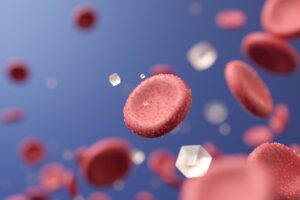Colourful foods may look fun, but synthetic food colouring could pose hidden risks to children’s health.
Have you noticed that when children are given the choice between colourful snacks and plain ones, they often pick the colourful options?
Studies show that visual cues, especially colour, have a strong influence on a child’s willingness to try food. Since our eyes are the first sense to interact with food, colour shapes our expectations and judgments before we even taste it.
For example, people often associate the colour red with sweetness. This explains why children are drawn to brightly coloured foods. Knowing this, food manufacturers often add food colouring to products to attract children’s attention and encourage them to eat those foods.

What is Food Colouring
Food colouring is a type of additive used to change or enhance the colour of food, making it more appealing to consumers. It can also help signal flavours, like purple for grape or green for apple.
There are two main types of food colouring: natural and synthetic.
- Natural food colouring comes from sources like fruits, vegetables, minerals, or animals.
- Synthetic food colouring is man-made, created through chemical processes.
Despite the availability of both types, synthetic food colourings are more widely used. They are cheaper, more stable, and resistant to light and pH changes. Common synthetic dyes include Allura Red, Brilliant Blue, Tartrazine, and Sunset Yellow. These are frequently found in cereals, candies, snacks, and beverages, especially those targeted at children.
Hidden Risks of Synthetic Food Colouring
As more people aim to eat healthily, concerns about the safety of synthetic food colouring, especially for children, have grown. Research suggests that synthetic food colouring can lead to several health issues in children, such as
- Decreased learning performance
- Behavioural problems and hyperactivity
- Difficulty concentrating
- Allergic reactions like skin rashes, itching, hives, or asthma symptoms, such as coughing and wheezing
Some children may be more sensitive to these effects, especially those with specific genetic traits that affect how their bodies process histamine, a chemical involved in immune responses and brain function.
In the long term, some studies suggest synthetic colourants might be linked to serious conditions like cancer, although more research is needed to confirm this.

How Parents Can Reduce the Risks
So what can parents do to limit their children’s exposure to synthetic food colouring:
- Read Labels Carefully
Check ingredient lists for colour additives like E129 (Allura Red), E102 (Tartrazine), or labels saying “Permitted Colouring” or “Permitted Synthetic Colour.” These may come with warnings. - Choose Natural Alternatives
Look for products with labels like “No Artificial Colours” or ingredients such as “Beetroot Red” or “Beta Carotene.” - Limit Processed Foods
Replace highly processed snacks with whole foods like fruits and vegetables. These naturally colourful foods do not require added dyes and help build healthier eating habits.
Understanding the types of food colouring and their potential effects is essential, especially for children. Overconsumption or long-term exposure to synthetic dyes can pose health risks. By learning to read food labels and encouraging healthier eating habits, parents can help reduce these risks while still offering children colourful and enjoyable meals.
Join our 1Twenty80 Broadcast Channel today! Be the first to receive interview updates, behind-the-scenes snippets and happenings in Malaysia’s health scene!












